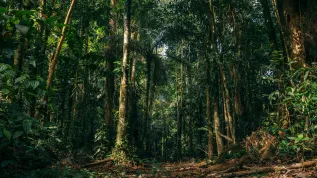
Biologists from the University of Lodz are investigating whether plants can be used to remove 'forever chemicals' from the soil. These are non-biodegradable chemical compounds known as perfluoroalkyl substances (PFAS) that pose a serious threat to the environment and human health.
PFAS are man-made substances, they do not occur naturally, but due to their special properties - repelling both fat and water molecules - they are widely used in many everyday products.
'They are used in many industries: in fire extinguishing foams, shampoos, cosmetics, stain-resistant products, in the production of sportswear, and even frying pans and carpets. The problem is that all these substances later end up in the environment and remain there for years', says Dr. Anna Wyrwicka-Drewniak from the Faculty of Biology and Environmental Protection at the University of Lodz.
They also pose a significant threat to the environment and people, because they do not decompose naturally, which is why they are called 'forever chemicals'.
'They get into water and soil, both during the production process and as waste. This has been happening for over eighty years. Additionally, many of these compounds dissolve quite well in water, which means that they can move easily, and they also have a huge capacity for bioaccumulation, i.e. accumulation in food chains', says Dr. Wyrwicka-Drewniak.
The scale of the problem is very large and concerns the entire world. Studies show that PFAS affect, among other things, the endocrine system, and therefore can cause thyroid diseases.
'They also cause circulatory system diseases, for example by increasing cholesterol levels, they damage the liver, cause kidney and testicular cancer, have a harmful effect on the reproductive system, and have a major impact on prenatal life, causing abnormalities in foetal development. It is difficult to defend against them, because these compounds enter human organisms with both water and food, interestingly not only with meat and fish, but also plants', the biologist explains.
Dr. Wyrwicka-Drewniak has been dealing with this problem for a long time. In the past, she conducted research with Italian scientists on the effect of PFAS on basil plants.
'We checked whether the plant absorbed hazardous compounds from the soil and whether it showed any symptoms of environmental stress. Unfortunately, our research showed that hazardous substances were very easily absorbed from the soil and accumulated inside the plant, not only in the roots and stems, but also in the edible leaves. Interestingly, the plant did not show any response to contamination by changing morphometric or biochemical parameters. In short, it is impossible to tell if the plant is contaminated based on its appearance', Dr. Wyrwicka-Drewniak says.
Dr. Wyrwicka-Drewniak specialises in phytoremediation, i.e. soil purification using plants. This method of remediating a contaminated environment uses the ability of plants to absorb pollutants through their root system and their subsequent translocation to above-ground parts. Thanks to this process, harmful substances can be removed from contaminated soil along with the resulting biomass. Phytoremediation is mainly used to purify soil and bottom sediments contaminated with heavy metals, radioactive elements and organic compounds.
'An idea emerged to check whether the basket willow, which is great at purifying the environment from various types of xenobiotics, can also handle 'forever chemicals' due to its rapid biomass growth. We believe that if the willow proves to be able to take up these substances from the soil, it can be used to purify post-industrial areas and sites contaminated during firefighting. The research is ongoing, we are currently analysing the PFAS content in the plant's tissues. The experiment is planned for two years', says Dr. Wyrwicka-Drewniak. (PAP)
PAP - Science in Poland, Bartłomiej Pawlak
bap/ agt/ js/ kap/
tr. RL













